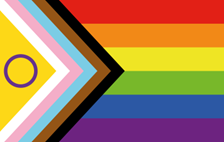The following is a list of questions that the OnA committee has received from our congregation. For each question submitted, a member of the committee researches and provides a draft answer to the rest of the committee. The committee reflects on the draft, suggests edits, and then approves the answer to be posted publicly.
Throughout this process, we invite you to submit your questions. You may download the question form to print and deliver to the OnA Kiosk in the social room, or you may submit your questions online. Please see the buttons below.
Many have asked, “Why does ECC need to become Open and Affirming? We welcome everyone who comes to our church already.” It is true; our church already has many signs of inclusion (think about changes we have made to make the church more handicap accessible). So why would we need to specifically mention sexual orientation or gender identity?
Historically society and many religious organizations, including most Christian churches, have rejected members of the LGBTQ+ community, considering their gender and/or sexuality as a mental illness, sinful, or deviant. When churches have welcomed LGBTQ+ members, it is with the caveat that they leave hidden that part of themselves or change what others would call a “lifestyle”. So many LGBTQ+ people need to be assured that this church is one where they can feel safe and whole and not judged or marginalized. This is where the word “affirming” comes in. As an Open and Affirming church, we will affirm that we see and respect the whole person and will create a safe space for members of the LGBTQ+ community.
A second way to look at this question is to ask, is it we who have the power to welcome individuals into the church, or is it Jesus who invites us to his table? Welcoming can look like an act of charity to those who are different or have been marginalized. Our committee believes that Jesus has already welcomed LGBTQ+ folks and asks us to celebrate God’s inclusive love for humankind in all its wonderful diversity. We believe that an individual’s gender and sexuality, like everything else, are gifts from God. And just like all gifts from God, they enhance and strengthen who we are as a congregation.
Please check out the question and answer regarding what the word “affirming” means for more information.
Answer coming soon
